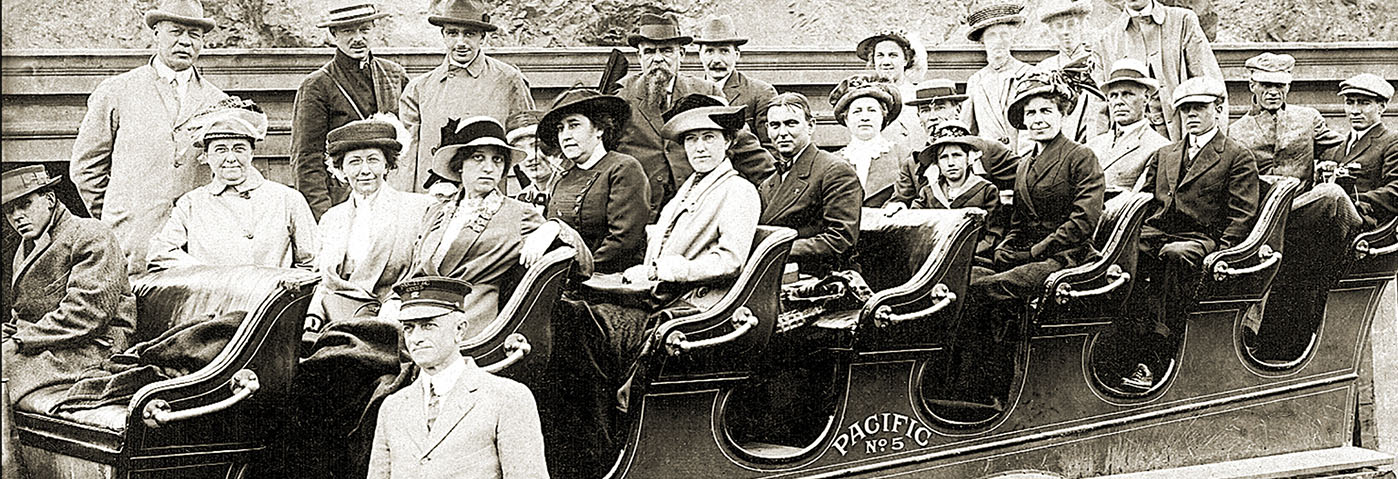The outpouring of grief on social media over the weekend of 14-16 September resembled the response to a national disaster. Yet no lives had been lost – the sadness was over the demise of a large corporate business. Not many companies can create this kind of reaction.
Still, the loss of Thomas Cook is hitting the UK hard. The company was seen as something of a national treasure – not least because of its 178-year history, but also its role in making travel and new experiences available to all. How did Thomas Cook create such a loyal following, and what went wrong?
Humble beginnings
Mr Thomas Cook, a very religious man, created his first tour in 1841 by arranging for his local temperance (anti-alcohol) group to travel by train to a meeting. One thing led to another, and soon he was organising much larger tours around the UK.
The destinations soon expanded to include France and Italy, then more of Europe, with cruises on the Nile becoming a popular choice by the end of the nineteenth century.
Travel of course stalled during the two world wars and Thomas Cook & Son, as it was now known, became nationalised as part of British Railways in 1945. It remained a public entity until the 1970s, which may explain a little of the affection that the UK has for this brand.
Holidays for everyone
Another source our affection must be Thomas Cook’s role in making overseas holidays the norm for many families over the 1960s and 1970s. The company started by visiting town halls all over the country to sell the idea of ‘foreign holidays’ and the fun available on the beaches of Spain, Italy and France. Air travel quickly became more affordable and appealing.
Business was booming and continued to do so long into the 1980s and 1990s, boosted by fondly-remembered advertising campaigns with the slogan ‘Don’t just book it, Thomas Cook it.’
By the Millennium the travel chain had tens of millions of customers, who visited Thomas Cook travel agents to book their holidays, flew with Thomas Cook airlines and enjoyed a Thomas Cook (or Sunworld or JMC) holiday, looked after by a Thomas Cook rep.
Changing times
But Thomas Cook’s end-to-end service brought with it huge costs, which began to add up for the brand. From 2000 onwards the internet began affecting all kinds of business sectors, and new low-cost airlines such as EasyJet and Ryanair began stealing market share, alongside dotcom innovations such as Lastminute.com. It became much easier to book online and save money. This trend continues with the rise of Airbnb and a new generation of booking sites.
Thomas Cook tried to keep with the times, launching a short-lived ‘build your own holiday’ online service, FlexibleTrips.com, and even establishing its own digital TV channel.
But it’s easier for start-up businesses to create brand new, high-functioning online customer journeys, than for vast companies to try and compete by updating their legacy systems. This, together, with its very expensive high street network and airline, certainly contributed to Thomas Cook’s troubles.
Merger misfortune
In 2007 Thomas Cook merged with MyTravel – a business that was also suffering at the hands of the internet. Instead of achieving predicted economies of scale, the merger actually created significant further costs and spiralling debt. This was made worse by a huge decline in customers using the company’s shops to book their holidays.
The situation came to a head in 2011 when Thomas Cook needed to seek shareholder support, injecting £450m to save the business. These challenges have since been compounded with further misfortune: terror attacks, hurricanes, volcanoes; heatwaves in the UK, and now, the uncertainty of Brexit – all of which deter people from booking.
Ultimately, the writing has been on the wall for years and Thomas Cook’s demise was only a matter of time. While that’s little comfort for the company’s 10,000 employees and millions of customers, it at least gives the rest of the travel sector some respite and protection, not least in picking up Thomas Cook’s business.
But the travel industry must take heed of the factors that caused its closure. Unfortunately, brand loyalty and a long and successful history just aren’t enough.
Timeline for visual
1841 – Thomas Cook begins organising tours for his temperance group
1865 – First holiday brochure published
1872 – Thomas Cook’s son joins the business
1874 – Thomas Cook & Son create the first ‘travellers cheque’
1890 – More than 3.25 million tickets sold in a year
1892 – Thomas Cook dies
1945 – Becomes nationalised as part of British Railways
1956-1959 – Begins promoting ‘foreign holidays’ to France, Italy, Spain and Switzerland
1965 – Profits exceed £1m
1977 – Is privatised and acquired by Midland Bank
1992 – Is sold to Westdeutsche Landesbank
2001 – Is acquired by C&N Touristic AG; becomes Thomas Cook AG; Thomas Cook TV launches on Sky Digital
2003 – Thomas Cook Airlines is launched
2007 – Merges with MyTravelGroup and becomes Thomas Cook Group PLC
2011 – Receives an emergency bail out when debt reaches £2bn
2013 – Raises £425m from shareholders
2019 – The company goes into liquidation


